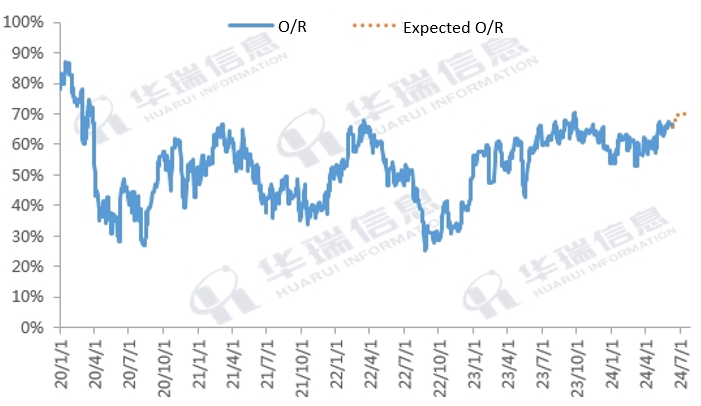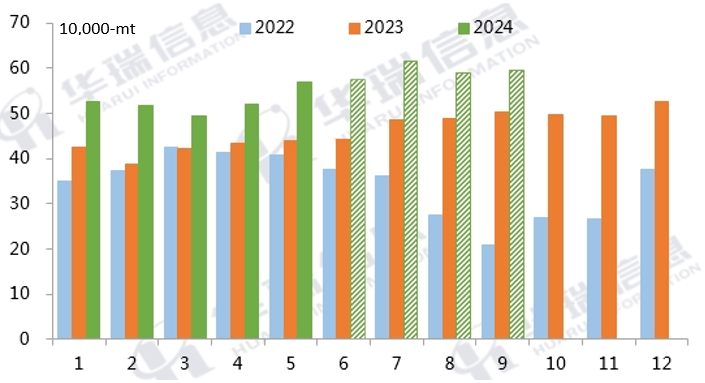The recovery of syngas-based EG operating rates delayed again
Based on improved production margins and low inventory levels, the syngas-based units are actively operating. Currently, apart from the long-term shutdown units, all other units are in operation. According to previous estimates, after the restart of Meijin and Tianying in early June, the syngas-based operating rate was expected to rise to around 70%. However, this week, both Hongsifang and Jianyuan unexpectedly reduced their operating rates due to equipment issues, while Zhongkun's rate continued to decline. Tongliao is continuing to operate at a low rate, and Tianying's output timing has been delayed due to equipment issues. Therefore, even though Meijin's operating rate quickly rebounded after the restart, as of June 13, the syngas-based operating rate had still fallen to 65.91%, with the recovery pace significantly delayed.
Operating rate of syngas-based MEG units

Looking ahead, the recovery time for Hongsifang and Zhongkun is uncertain, Jianyuan is expected to return to normal next week, Tongliao is expected to return to normal in late June, and Tianying has started output as of June 13. Based on this assessment, the syngas-based operating rate is still expected to rebound to around 70% by the end of June, nearly half a month later than previously expected. Furthermore, it appears that the 70% operating rate is already the peak for the syngas-based units, with very limited room for further increases.
Coal prices: Qinhuangdao vs imported

The port coal prices have been stagnant last week, and the price of raw coal purchased externally by factories has remained basically the same as last week. Although the northern regions have recently experienced widespread high temperatures, gradually increasing electricity load, the southern regions have had continuous rainy weather, which has somewhat suppressed the increase in thermal power load. The daily consumption of power plants has risen more slowly than in previous years. Additionally, the recent continuous decline in imported coal prices has made it even more difficult for domestic coal prices to rise.
Of course, as temperatures continue to rise, the seasonal increase in daily consumption at power plants is inevitable. The market demand for restocking may come sooner or later, but the increase in hydropower will squeeze out some demand for thermal power. Additionally, coal imports have increased significantly this year, with 204.969 million tons imported nationwide from January to May, a year-on-year increase of 12.6%. With the replenishment of imported coal supplies, the potential for coal price rebounds is expected to be limited.
China's syngas-based output forecast

At current prices, syngas-based ethylene glycol still maintains a certain cash flow. With overall controllable coal costs, syngas-based production is expected to remain high in the near term. Currently, there are no clear maintenance plans for the units in July, so syngas-based production may reach a peak. In August and September, Tongliao and Shenhua Yulin have annual maintenance plans, during which production is expected to decline. Additionally, attention should be paid to the operational stability of the units in production.
- Top keywords
- Cotton Price
- Cotton Futures Price
- Cotton Futures
- CZCE
- PTA Futures Price
- Chemical Fiber
- Polyester Prices
- Wool price
- PTA Futures
- Shengze Silk
- China
- Yarn Price
- price
- China Textile City
- Fibre Price
- Benzene Price
- Cotton
- Index
- Cotton Index
- PTA
- fabric price
- NYMEX
- Top 10
- textile industry
- Spot Cotton
- Cotton Yarn
- Polyester Price
- Futures
- PTA Price
- cotton yarn price

